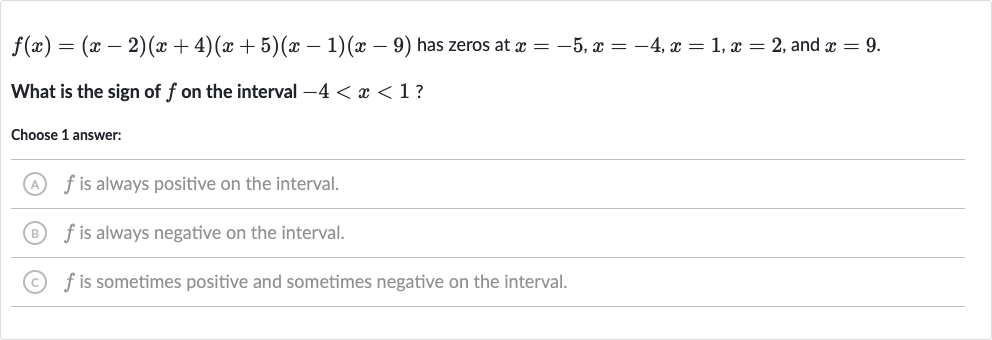Full solution
Q. has zeros at , and .What is the sign of on the interval ?Choose answer:(A) is always positive on the interval.(B) is always negative on the interval.(C) is sometimes positive and sometimes negative on the interval.
- Sign Change at Zeros: Since is a product of linear factors, the sign of changes at each zero of the function.
- Consistent Sign Interval: Between the zeros and , there are no other zeros, so the sign of will be consistent in this interval.
- Determining Sign at Test Point: To determine the sign of in the interval -4 < x < 1, we can pick a test point in the interval, like .
- Calculate : Plug into to get .
- Final Calculation: Calculate .
- Conclusion: , which is negative.
- Conclusion: , which is negative.Since is negative and there are no zeros between and , is always negative on the interval -4 < x < 1.

